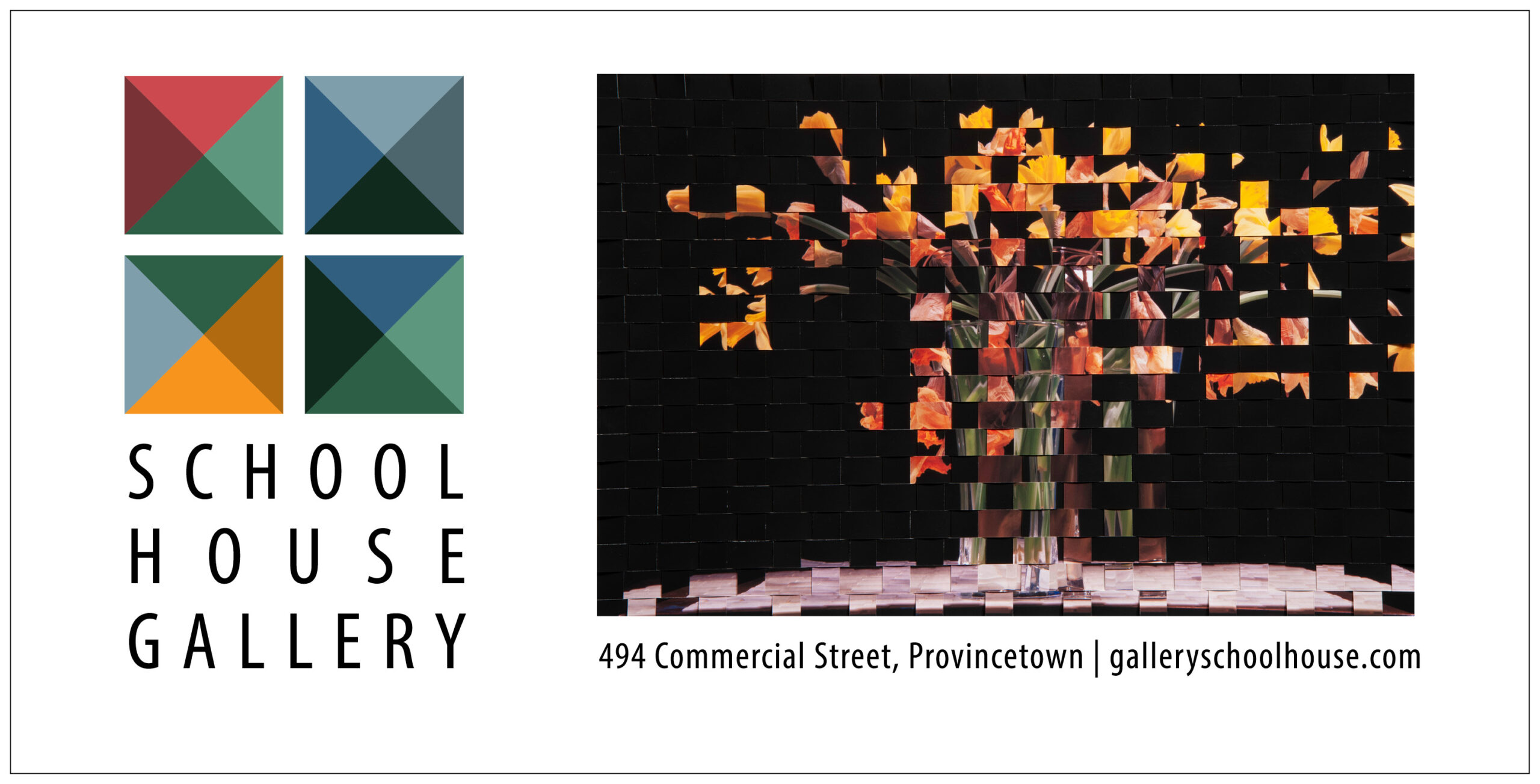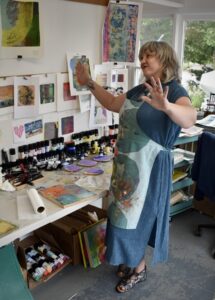
In Elspeth Slayter’s mixed-media works, paint is pressed on paint, layer after layer: a web of yellow covers a block of cayenne red; sky blue buoys are bruised with violet; apricot mottling floats over a turquoise circle. The edges of each piece are imperfectly defined and look almost as if they were cut out of a larger work of art.
Her monotype paintings reflect the experimental feeling of a movement called new casualism, which reveals the unrefined edges and processes involved in painting rather than arriving at obvious images.
She composes by applying paint to a silicone plate, then pressing the plate onto a wooden board or paper. When the paint is dry, she scrapes and lifts some of it away. And she often starts over, building right on top of what she’s already done.
Behind her in her studio — one of eight new spaces the Provincetown Commons has opened at 74 Shank Painter Road — is a wall full of pieces from her “Artifacts” series, compositions that include circles at different scales and which she says are in dialogue with memory and unpredictability. Slayter composes around her mistakes. For these works she gave herself three rules that seem different from those one might learn in art school: tear up rice paper; work from a failed monotype; and make a collage with paint.
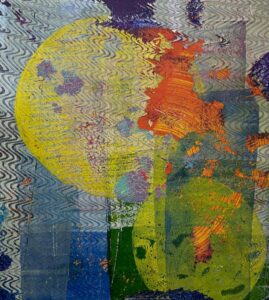
Underneath her teal apron splashed with acrylic paint and ink, Slayter is wearing a dress. “I have to go to a tea party from here,” she says. She has lived in Provincetown’s East End for the last 15 years with her Turkish husband, Murat Recevik, who is also an artist.
In Memory Buoy #27 yellow acrylic is layered on top of a previously discarded print. Buoys are a theme — objects that give us direction, visible in the dark, Slayter says.
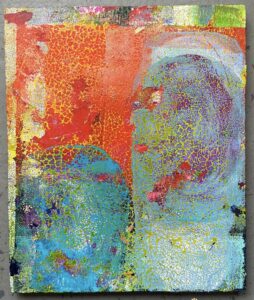
The images emerging from the layered work are abstract, but for Slayter the interplay of backgrounds and shapes represents the jostling and repositioning of chapters of experience and memory.
“They’re about coping with having lived life,” she says. “They allow things to come through, perhaps even things I don’t want to see.”
Slayter learned printmaking in high school in Sudbury, where students were allowed to delve deep into the arts. She remembers studying art for four hours a day there. But she set it aside to pursue a career in social work. It was one that brought her into the courts, working with parents charged with child abuse and neglect and with children affected by those same difficulties. She had been teaching at Salem State University for 20 years when she left in 2022 to become an artist.
“How do you manage being exposed to so many difficult things?” she says. “I have a lot stored in my head.” Painting helps her process that past, she says.
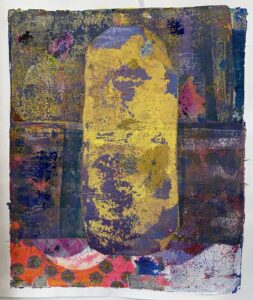
In Memory Buoy #90 Slayter explores what’s above and below the surface. Lavender paint is printed onto a yellow buoy, which looks to have become rusted bright from the tides. Slayter says her work has gotten brighter over time.
Messy edges predominate in Artifact #184. For that piece, Slayter took a print she didn’t like and painted it with yellow and burnt orange. Not satisfied, she took tweezers to the plate, using them to lift off sections of color. The result was still too grainy. She set the piece aside for a while.
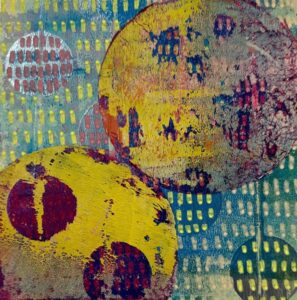
When she creates work on paper, it’s often bumpy. Edges are not treated as neat, sharp angles; their shape is irregular. “There’s a yellow circle and some pink squiggles,” she says. “I’m interested in imperfection.”
Once the plate was dry, she peeled off areas, pressed translucent paint on the painting and left it overnight. For all its rough edges, a lot of work and reworking of the piece happens before it is declared done.
She sees histories in the abstraction: embers of the past glow through the green and blue beauty of an Earth-like orb. “I like the intellectual challenge of dealing with an artifact on the plate,” she says. “I have to work with what’s already there.”
Casual Impressions
The event: Monoprint paintings by Elspeth Slayter
The time: Aug. 9 through 22
The place: Four Eleven Gallery, 411 Commercial St., Provincetown
The cost: Free

